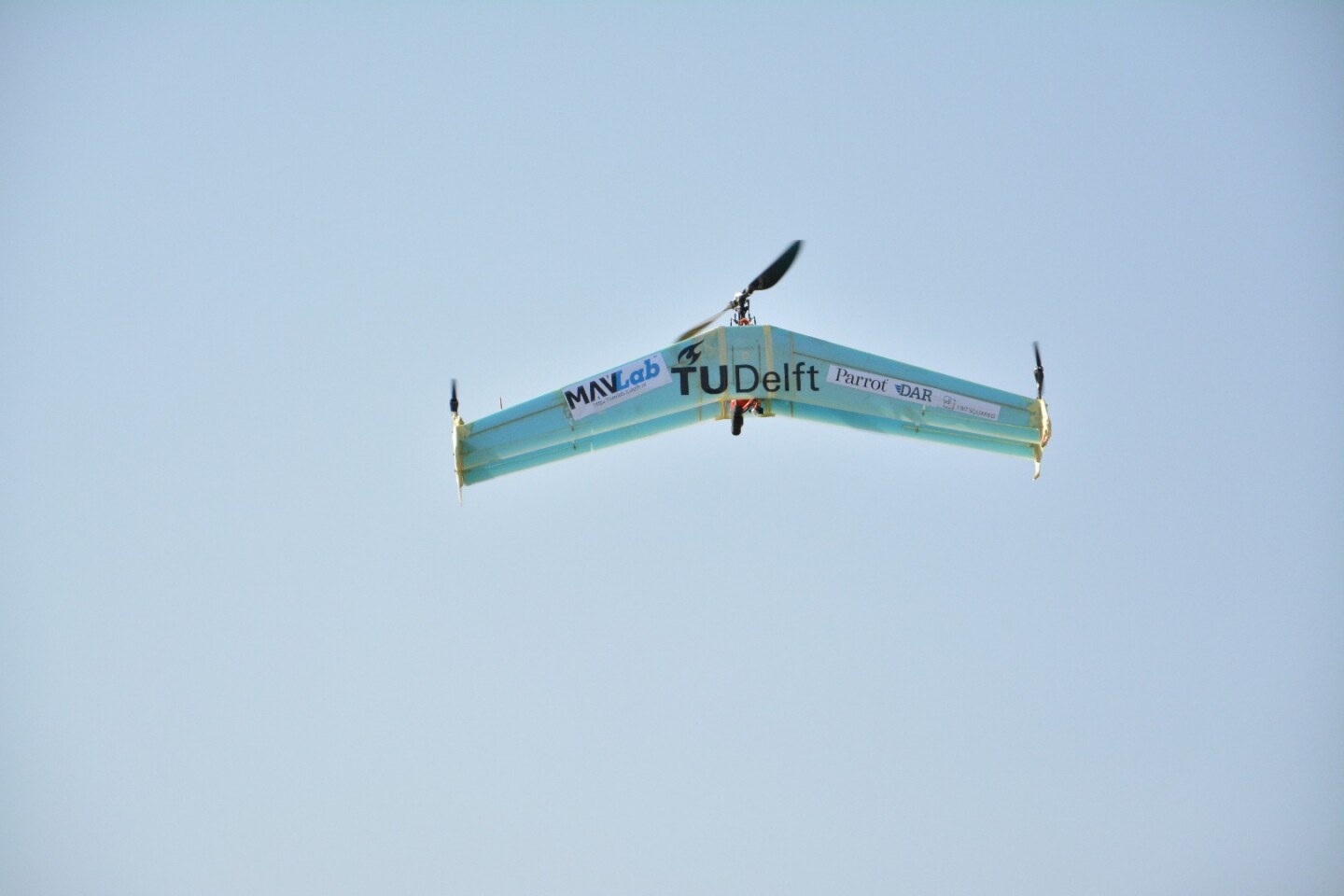Rotary wing drones like GoPro's newly unveiled Karma, and fixed-wing varieties like those often used in agriculture, both have their strengths and weaknesses. Efforts to combine the best of both raise the prospect of unmanned aircraft that can take off vertically and also fly for a long time. The latest entrant to this arena comes from researchers at the Delft University of Technology, whose delftAcopter relies on a helicopter propellor to be lifted off the ground, but then soars like a plane once in the air.
We have seen a few different takes on Vertical TakeOff and Landing (VTOL) drones over the last few years. The idea behind such approaches is to harness the typically longer range and greater payload capacity of fixed-wing drones and mix it with the superior agility of multicopters, allowing them to take off and land in tight spaces.
Some of these have been developed for military purposes, such as the HQ UAV and the Batwing-like AirMule, but others, like the VTOL Kestrel and SkyProwler are aimed more at hobbyists. In developing the delftAcopter, the researchers have set out to build a drone that can be used to carry medical supplies to tough-to-reach areas.
The electric drone takes the form of a miniature biplane, an aircraft design that uses two wings stacked on top of one another which became popular in the early years of aviation following its success at the hands of the Wright brothers. While some VTOL drones use tilting propellors to switch from vertical to horizontal movement, the delftAcopter itself changes orientation as it makes that transition.
Prior to takeoff, it sits upright with the propellor spinning horizontally, just like a helicopter. Then as it reaches the desired height, it shifts its position by 90 degrees so that the propellor is facing forward and it is thrust in that direction, allowing it to zip along at up to 107 km/h (66 mph). With a 10,000 mAh battery onboard, the aircraft can fly for up to 60 minutes on a single charge.

The delftAcopter is capable of entirely autonomous flight, including takeoff, forward flight transition and landing. It can travel beyond the operator's line of sight and maintain a connection through an Iridium satellite connection, which the researchers actually claim allows it to be controlled from anywhere on the planet.
It uses Parrot's S.L.A.M.dunk developer kit along with a fish-eye stereo camera to gather video, and uses an inertial measurement unit (IMU) and GPS to track its position during flight. The craft weighs 4 kg (8.8 lb) and also features obstacle avoidance and the ability to pick out safe landing zones.
The team is set to put the delftAcopter through its paces at the upcoming 2016 Outback Medical Challenge. The event takes place in Australia and tasks competitors with building an autonomous aircraft capable of retrieving a blood sample from a stranded person located at an inaccessible site around 30 km (18 mi) away.
Drones have emerged as tools with great potential when it comes to search, rescue and disaster relief situations. Various drones have been tested for these purposes in the US, the Swiss Alps and across Africa, a particularly suitable candidate due to rough terrain and the lack of paved roads and infrastructure to move cargo by land. The delftAcopter will have its chance to demonstrate its wherewithal at the Outback Medical Challenge between September 27 to 29.
You can see it in flight in the video below.
Source: Delft University of Technology 1, 2







